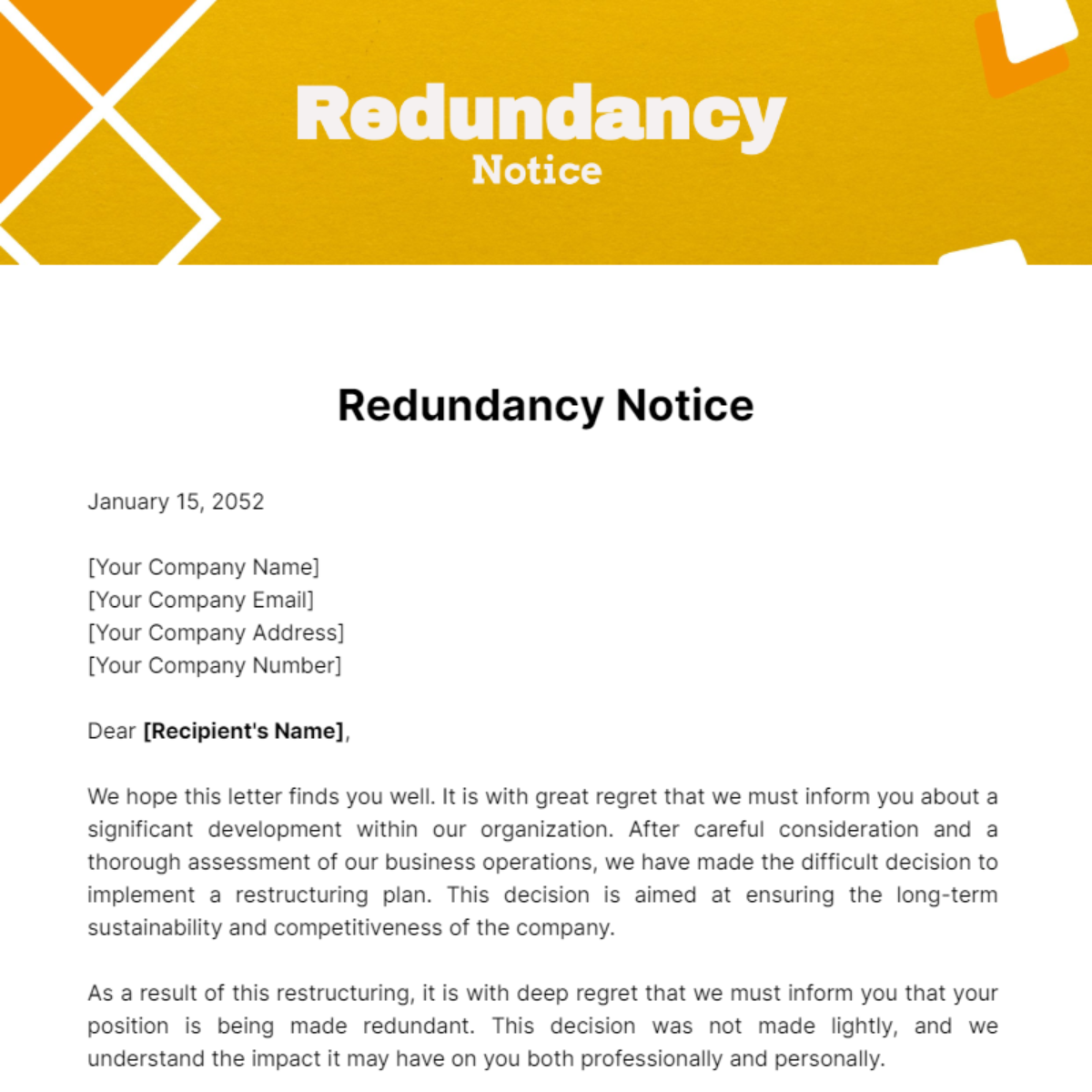Who Pays Redundancy Money? Understanding Employer Duties in the UK
Who Pays Redundancy Money? Understanding Employer Duties in the UK
Blog Article
Discovering the Operational Dynamics of Company Redundancy and Its Long-Term Sustainability

Redundancy Techniques for Company Continuity
In order to ensure nonstop operations, companies must execute effective redundancy techniques for organization continuity. Redundancy in this context describes the duplication of crucial components or features within a system to alleviate the influence of prospective failings. By incorporating redundancy methods, organizations can boost their resilience versus disturbances brought on by numerous factors such as all-natural disasters, devices failings, or cyber-attacks.
One usual redundancy technique is the execution of backup systems and data storage space options. This involves producing matches of necessary data and systems that can be triggered in instance of a main system failure. Additionally, organizations can develop repetitive interaction networks and source of power to keep connection and procedures throughout unexpected events.
In addition, cross-training employees to do numerous roles within the business can work as a beneficial redundancy strategy. If key personnel are not available due to health problem or other factors, this makes certain that essential tasks can still be brought out even. In general, efficient redundancy approaches are essential for services to support functional continuity and decrease the effect of prospective disruptions.
Impact of Redundancy on Organizational Strength
Offered the critical function redundancy methods play in ensuring organization connection, exploring the influence of redundancy on business strength comes to be imperative for comprehending the all natural operational dynamics of a firm. Organizational strength refers to an entity's capacity to adjust to disruptions, recoup from troubles, and transform when required while keeping core features. Redundancy, when strategically implemented, can significantly add to boosting an organization's resilience when faced with unexpected obstacles. By having backup systems, personnel, or procedures in position, business can much better endure shocks and proceed operations with marginal interruption.
Furthermore, redundancy can bolster employee spirits and self-confidence, understanding that there are backup strategies in position to resolve unexpected conditions. This feeling of protection can bring about increased performance and a much more favorable workplace. Furthermore, redundancy can cultivate development and creativity within an organization as employees feel equipped to take computed threats, understanding that view website there is a safeguard to sustain them in situation of failure. In general, the influence of redundancy on business strength is extensive, shaping the long-term sustainability and success of a company.
Balancing Efficiency and Versatility in Redundancy
Achieving an unified equilibrium between operational effectiveness and flexible flexibility is a crucial obstacle in the strategic release of redundancy within organizations. Efficient procedures are important for preserving efficiency and cost-effectiveness, guaranteeing that resources are used efficiently. However, extreme focus on efficiency alone can bring about rigidness, making it difficult for organizations to adjust to unanticipated changes or difficulties. On the various other hand, versatility permits organizations to react nimbly to developing scenarios, cultivating technology and resilience. Yet, way too much versatility without a solid operational structure can lead to ineffectiveness and inconsistency.
To stabilize effectiveness and versatility in redundancy preparation, companies must very carefully analyze their operational needs, market dynamics, and critical objectives. Implementing lean methods can improve performance by streamlining processes and getting rid of waste, while fostering a society of adaptability and continuous enhancement can increase flexibility. Furthermore, investing in cross-training programs and robust communication channels can aid grow a functional labor force efficient in managing diverse jobs during durations of change. Inevitably, locating the appropriate equilibrium in between performance and versatility is critical for constructing a resistant and sustainable organization when faced with uncertainty.
Long-Term Sustainability Through Redundancy Planning
To ensure enduring viability and stability, organizations need to strategically align their redundancy planning with lasting sustainability goals, therefore harmonizing operational effectiveness with adaptive flexibility. Companies must see redundancy not as a reactive solution to immediate issues but as an aggressive strategy for lasting success.

Aggressive Procedures for Lasting Business Workflow
Just how can companies proactively improve their functional sustainability for long-lasting success? Carrying out proactive measures is important for companies intending to make sure sustainable operations. One key method is to invest in technology and innovation to simplify procedures, decrease waste, and remain competitive in the marketplace. Adopting sustainable practices such as reducing energy usage, minimizing carbon impact, and optimizing resource usage can not only benefit the atmosphere however likewise lead to cost financial savings in the future.
Furthermore, promoting a society of continual improvement and discovering within the company can improve flexibility to changing market conditions and client demands. Encouraging worker involvement in decision-making processes and supplying possibilities for professional development can improve morale, performance, and general efficiency. Developing clear objectives, checking essential efficiency signs, and regularly assessing progression are crucial elements of proactive sustainability management.
Collaborating with suppliers, customers, and other stakeholders to advertise sustainable methods throughout the supply chain can develop a causal sequence of positive influence - redundancy pay if company goes bust. By taking positive steps towards functional sustainability, companies can build durability, drive innovation, and safeguard their long-lasting success in an ever-evolving organization landscape
Final Thought

In the realm of organizational administration, the critical deployment of business redundancy stands as a critical yet detailed method that necessitates a delicate equilibrium between functional efficiency and long-lasting stability. By dissecting the operational dynamics that underpin firm redundancy and assessing its wider ramifications for organizational resilience and flexibility, a nuanced understanding of how redundancy techniques can form the future trajectory of a business begins to unravel.Provided the critical role you could try here redundancy methods play in making certain business continuity, discovering the impact of redundancy on organizational durability comes to be important for comprehending the all natural functional characteristics of a firm. Generally, the impact of redundancy on organizational resilience is profound, shaping the long-lasting sustainability and success of a company.
In final thought, recognizing the operational characteristics of company redundancy is critical for ensuring lasting sustainability.
Report this page